Marseille Port: A Key Gateway for International Trade
The Port of Marseille is a pivotal hub in the maritime industry, particularly for companies and enterprises looking to ship goods to and from France. Collaborating with a reliable freight forwarder is essential for a seamless transition. These professionals not only offer competitive pricing but also tailor solutions to meet the specific needs of their clients, facilitating the transportation of cargo ranging from small parcels to full container loads.
France's Major Import and Export Products
As a significant exporter, France contributes a wide array of products and services to the global market. Among its primary exports are aircraft, vehicles, pharmaceuticals, plastics, chemicals, electronic products, and agricultural goods. Additionally, France is renowned for its exports of wine and spirits, luxury goods, and industrial machinery.
On the import side, France brings in a broad spectrum of consumer goods, including electronics, clothing, and footwear. As a key player in the global market, France holds a competitive edge in the production and export of luxury items, advanced technology, and agricultural products.
According to CEIC data from December 2020, France's container throughput stood at 5.1 million TEUs, a slight decrease from the 5.8 million TEUs recorded in December 2019. The emergence of the COVID-19 pandemic is a likely contributing factor to this decline.
List of French Ports: Largest, Busiest, and Main Ports
In terms of maritime transport, France is no small player. Situated along the European continent's coast, it borders the English Channel, the North Sea, and the Mediterranean Sea. With an extensive coastline and numerous renowned ports, France is a vital link in the shipping industry.
Here are some of the largest ports in France, recognized for their high volume of cargo arrivals, freight capacity, and maritime traffic:
- Port of Marseille
- Nice Cruise Port
- Port of Calais
- Port of Toulon
- Port of Caen
- Port of Fos
- Dieppe Port
- Port of Roscoff
- Dunkirk Port
- Saint-Malo Port
These ports are also the primary landing points for goods from China. Gaining insights into these French shipping ports that facilitate imports from China or exports to China can be crucial for seamless trade operations.
Port of Marseille
The Port of Marseille is a major gateway for international trade, serving as a critical entry point for goods entering France. Its strategic location and extensive facilities make it a preferred choice for businesses engaged in global commerce. The port's efficiency and connectivity to other parts of Europe and beyond ensure that cargo can be swiftly and securely transported to its final destination.
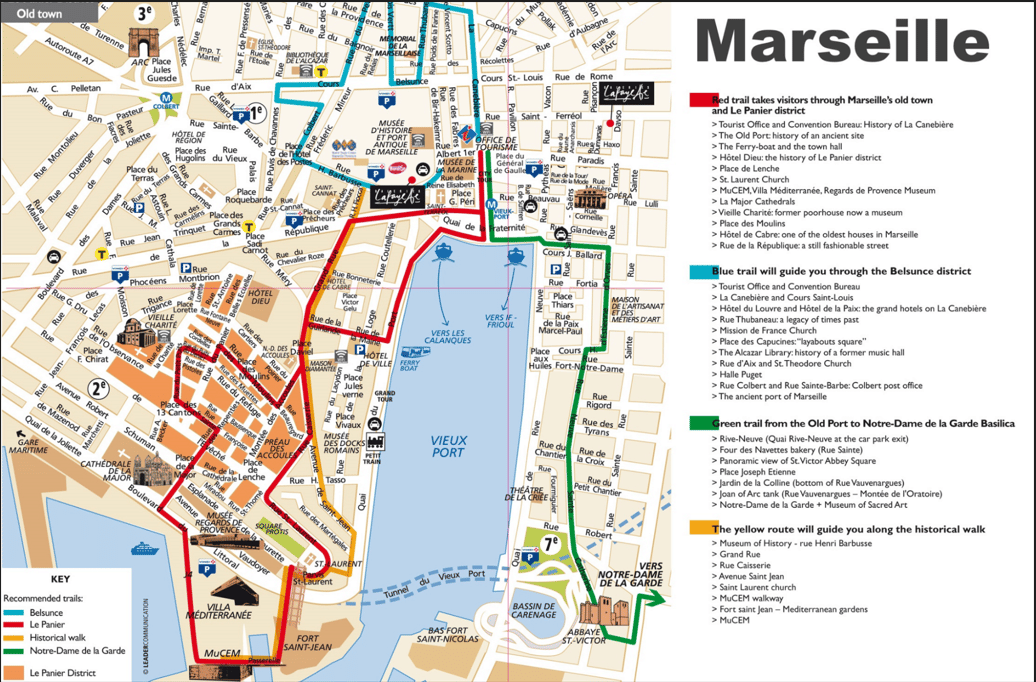
Marseille Port: A Strategic Maritime Gateway
Port Code: FRFOS
Port Size: 400 hectares
Port Location: North of Marseille and in the coastal area of Fos-sur-Mer (northwest of Marseille)
Main Cargo/Vessel Types: Bulk, containers, tankers, natural gas, and general cargo
TEUs Handled: 1.4 million
Nestled in the south of France, the Port of Marseille stands as a major European port. It is the largest in France by freight tonnage and one of the largest in the Mediterranean region.
Serving as a principal hub for transportation and commercial trade, the port links the European continent with Africa and the Middle East, providing passage for both cargo and passengers. Additionally, it is approximately 10,000 nautical miles away from China.
The historic port of Marseille is the Old Port, which was eventually deemed insufficient to manage the extensive maritime traffic. In 1844, the government decided to construct another port to the north of the Old Port, which became the Marseille Cruise Port.
For more insights into the Port of Marseille, continue reading.
Nice Port: A Jewel of the French Riviera
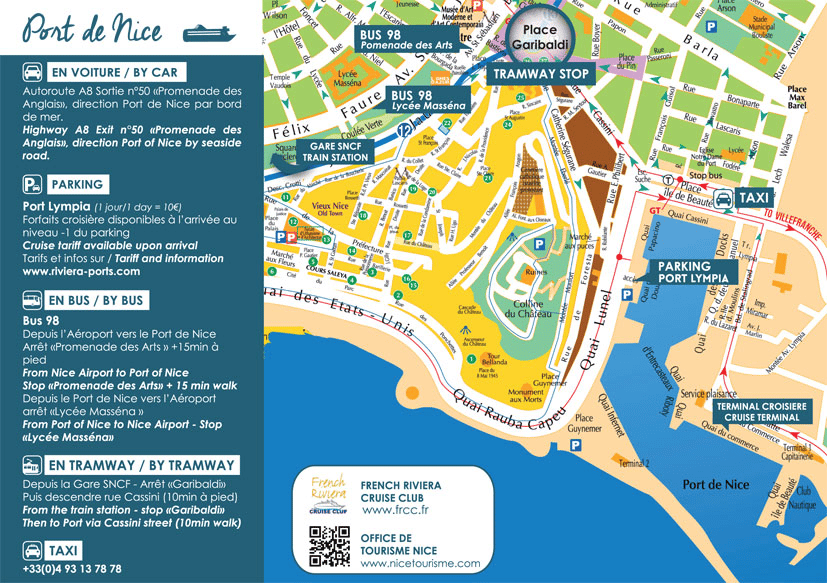
Nice Port: The Mediterranean's Elegant Maritime Hub
Port Code: FRNCE
Port Size: Approximately 10 to 20 hectares
Port Address: CCI Nice Côte d'Azur, Port de Nice – Service Plaisance 2 Quai d'Entrecasteaux – 06300 Nice
Main Cargo/Vessel Types: Fisheries, recreational boats, cruise ships, and tankers
TEUs Handled Annually: Approximately 100,000 to 500,000 TEUs
Located in the vibrant city of Nice on the French Riviera, the Port of Nice is an important maritime port along the Mediterranean coast of France. It is recognized as one of the country's most significant ports.
Currently, it is home to at least a thousand vessels. The Port of Nice also boasts dozens of ferry routes that connect Nice with other cities across France, Italy, and beyond. It is situated at a distance of 9,900 nautical miles from China.
The Old Port of Nice, established in the 18th century, was originally a coastal property of the Kingdom of Piedmont-Sardinia. It was eventually developed into a port and, after World War II, became an integral part of the city's development.
For further insights into the Port of Nice, continue reading below.
Nice Port: A Historical and Modern Maritime Center
The Port of Nice, with its rich history and modern facilities, is a testament to the region's maritime legacy. It offers a picturesque setting for both commercial activities and leisure pursuits. The port's strategic location along the Côte d'Azur makes it an ideal gateway for international trade and tourism.
Boasting a diverse fleet of vessels, the Port of Nice caters to the needs of the fishing industry, recreational boaters, and the cruise ship sector. Its ferry services provide convenient connections to various destinations, enhancing regional accessibility and promoting cultural exchanges.
The Old Port, a historical gem, has been transformed over the centuries to accommodate the evolving demands of maritime activities. Today, it stands as a symbol of Nice's maritime prowess and contributes to the city's vibrant economy and cultural landscape.
As you delve deeper into the story of the Port of Nice, you'll uncover a fascinating narrative of progress and heritage that defines this Mediterranean maritime hub.
Port of Calais
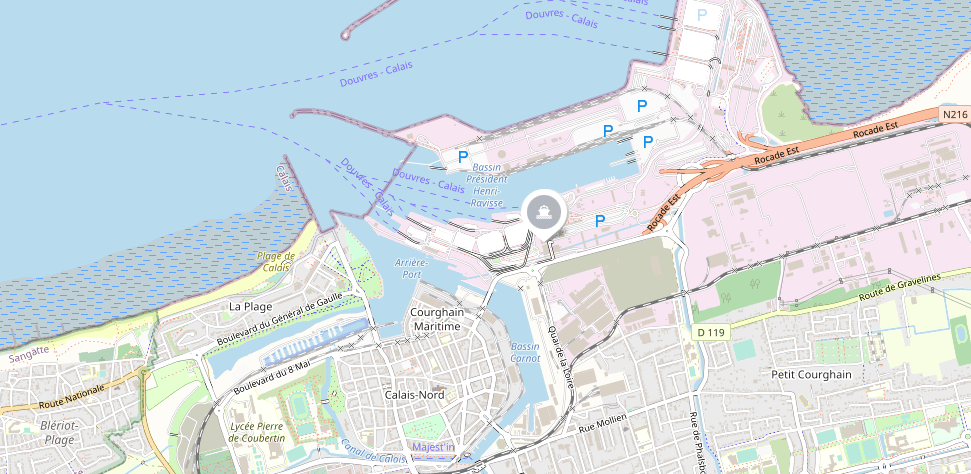
Port of Calais: Gateway to the United Kingdom
Port Code: FRCQF
Port Area: 160 hectares
Port Address: Calais Ferry Port, Terminal E, Calais, 62100, France
Main Cargo/Vessel Types: Containers, freight ferries, and passenger vessels
TEUs Handled Annually: Approximately 100,000 to 500,000 TEUs
The Port of Calais, situated in the commune of Calais in northern France, is a principal maritime gateway. Located at the entrance to the Strait of Dover, it provides access to the English Channel and connects France with the United Kingdom. The port is positioned at a distance of 14,400 nautical miles from China.
As the fourth-largest port in France and the largest in terms of passenger traffic, the Port of Calais boasts extensive facilities for cargo handling and storage.
The port also offers a range of services to its clients, including customs clearance, warehousing, and fully integrated logistics. Historically, the Treaty of Le Touquet has granted the port concurrent jurisdiction, with France and the United Kingdom each holding shares in the development of the port to this day.
For more information on the Port of Calais, continue reading below.
The Port of Calais: A Strategic Maritime Hub
The Port of Calais, with its strategic location on the northern coast of France, serves as a vital link between the European mainland and the United Kingdom. As a bustling maritime center, it plays a crucial role in facilitating trade and travel across the English Channel.
Covering an area of 160 hectares, the port is equipped with modern cargo handling and storage facilities designed to accommodate a wide array of vessels, from container ships to freight and passenger ferries.
In addition to its physical infrastructure, the Port of Calais provides a comprehensive suite of services aimed at enhancing the efficiency of maritime operations. These services include streamlined customs procedures, secure warehousing solutions, and integrated logistics support.
The port's historical significance is underscored by the Treaty of Le Touquet, which has shaped its governance and development, reflecting the collaborative efforts of both French and British authorities.
As you explore the Port of Calais further, you'll discover a rich tapestry of maritime history and modern innovation that underscores its status as a key player in international trade and transport.
Port of Toulon
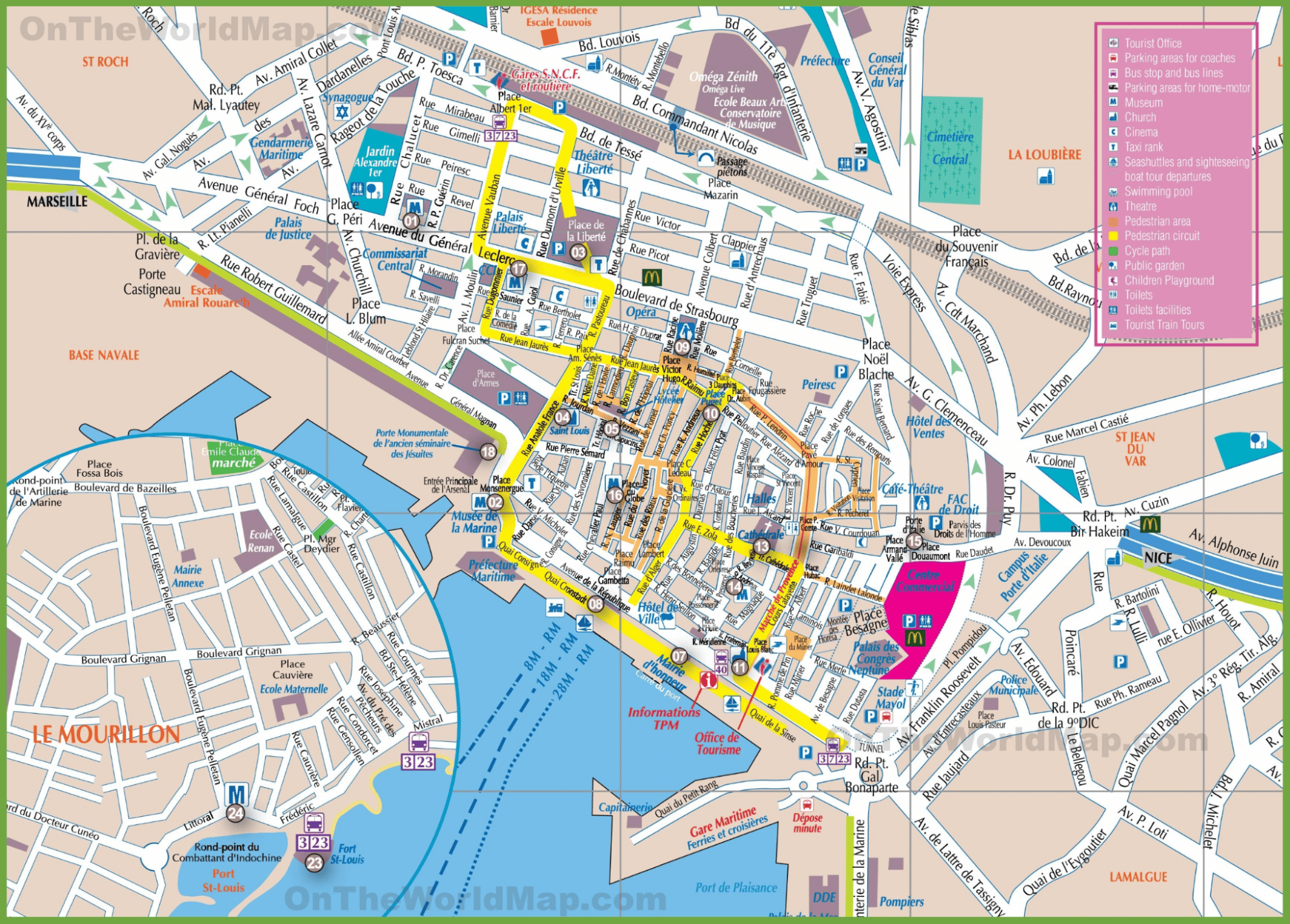
Port of Toulon: A Strategic Mediterranean Multipurpose Port
Port Code: FRTLN
Port Area: 16.54 square miles
Port Address: Quai Kronstadt, 83000 Toulon, France
Main Vessel Types: Yachts, chemical and oil tankers, cargo ships, military vessels
TEUs Handled Annually: Approximately 300,000 to 600,000 TEUs
The Port of Toulon, located in the Mediterranean region of France, is one of the country's largest and most significant ports. It is a versatile maritime facility, primarily serving container shipping, oil and gas, military, and general cargo operations.
As an essential gateway to Southern France, the Port of Toulon is also the primary embarkation point for the French Navy. It boasts excellent transportation links, with proximity to airports, train stations, and a comprehensive highway network. Additionally, the port serves as a hub for ferry services to Corsica, Sardinia, and other Mediterranean destinations. It is situated at a distance of 9,900 nautical miles from China.
In 1815, Toulon became an indispensable part of French military expeditions. Before it became a hub for commercial and passenger vessels, it served as a stronghold for the French naval fleet and allied navies.
For more information on the Port of Toulon, continue reading below.
Toulon Port: A Legacy of Naval and Commercial Excellence
The Port of Toulon, with its expansive 16.54 square miles, stands as a testament to the strategic importance of maritime infrastructure. As a multifaceted port, it caters to a diverse range of maritime activities, from the bustling container trade to the critical transportation of oil and gas.
Serving as a vital conduit to the rich cultural and economic heart of Southern France, the port's significance extends beyond its commercial functions. It is deeply rooted in the country's naval history, having played a pivotal role in the military endeavors of the 19th century.
Today, the Port of Toulon continues to uphold its legacy as a center for naval operations while expanding its reach in the commercial shipping sector. Its strategic location and robust transportation infrastructure make it a preferred destination for both military and civilian vessels.
The port's role as a ferry hub further underscores its importance in regional connectivity, providing essential links to the islands and coastal regions of the Mediterranean.
As you delve deeper into the history and operations of the Port of Toulon, you'll uncover a dynamic maritime center that harmoniously blends its storied past with a progressive vision for the future.
Port of Caen
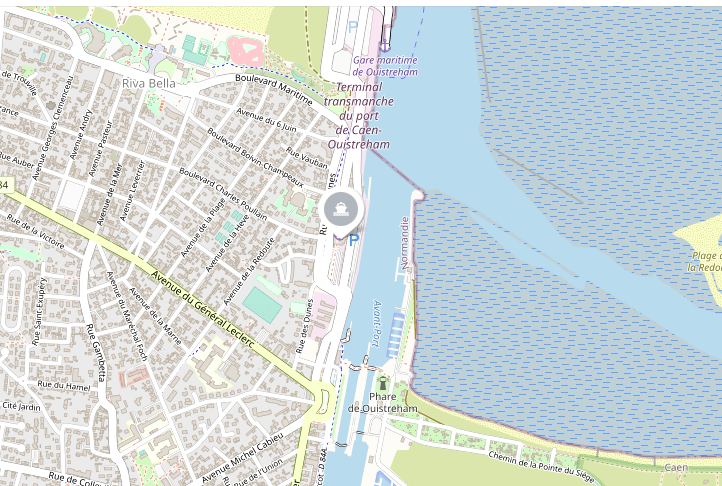
Port of Caen: A Historic Maritime Hub in Normandy
Port Code: FRCFR
Port Size: 100,000 square miles (Note: This size seems unusually large for a port, it might be a typo or misinterpretation. The actual size could be 100,000 square meters or a similar measurement.)
Port Address: Quai Vendeuvre, 14000 Caen, France
Main Vessel Types: Sailing boats, cruise ships, ferry terminals
TEUs Handled: Approximately 100,000 to 200,000 TEUs
The Port of Caen, located in Normandy, France, is one of the region's oldest and most significant ports. It serves as a nexus for commerce, industry, and leisure activities. Situated on the English Channel, it acts as a gateway to the European region.
Throughout its storied history, the port has been utilized by several major civilizations and has been a strategic port since Roman times. Today, it is a bustling hub equipped with modern facilities, a wide array of services, and the advantage of being close to key rail, road, and air connections. The port is positioned at a distance of 7,990 nautical miles from China.
The port is well-appointed with multiple docks and facilities, including container terminals, cruise ship terminals, ferry terminals, and yacht marinas.
For more insights into the Port of Caen, continue reading below.
Caen Port: A Beacon of Maritime Activity in Normandy
Nestled along the coast of Normandy, the Port of Caen is a historic maritime center that has stood the test of time. Its strategic location on the English Channel has long made it a crucial point of access to Europe, with a history that dates back to the Roman era.
The port's rich past is evident in its current operations, which blend seamlessly with modern infrastructure and services. It is a thriving maritime community that caters to a variety of vessels, from cargo ships to leisure boats, and supports the local economy with its commercial and industrial activities.
Despite the potential discrepancy in the port's size, its actual footprint is likely much smaller and more in line with typical port dimensions. This does not detract from its importance, as the Port of Caen remains a vital link for trade and transportation.
With its proximity to essential transportation networks, the Port of Caen offers convenient access for both local and international traffic. Its facilities are designed to accommodate the diverse needs of the maritime industry, ensuring efficient operations and a welcoming environment for all who pass through its waters.
As you explore the Port of Caen further, you'll discover a maritime gem that has been shaped by centuries of history and continues to play a pivotal role in the region's prosperity.
Port Forth
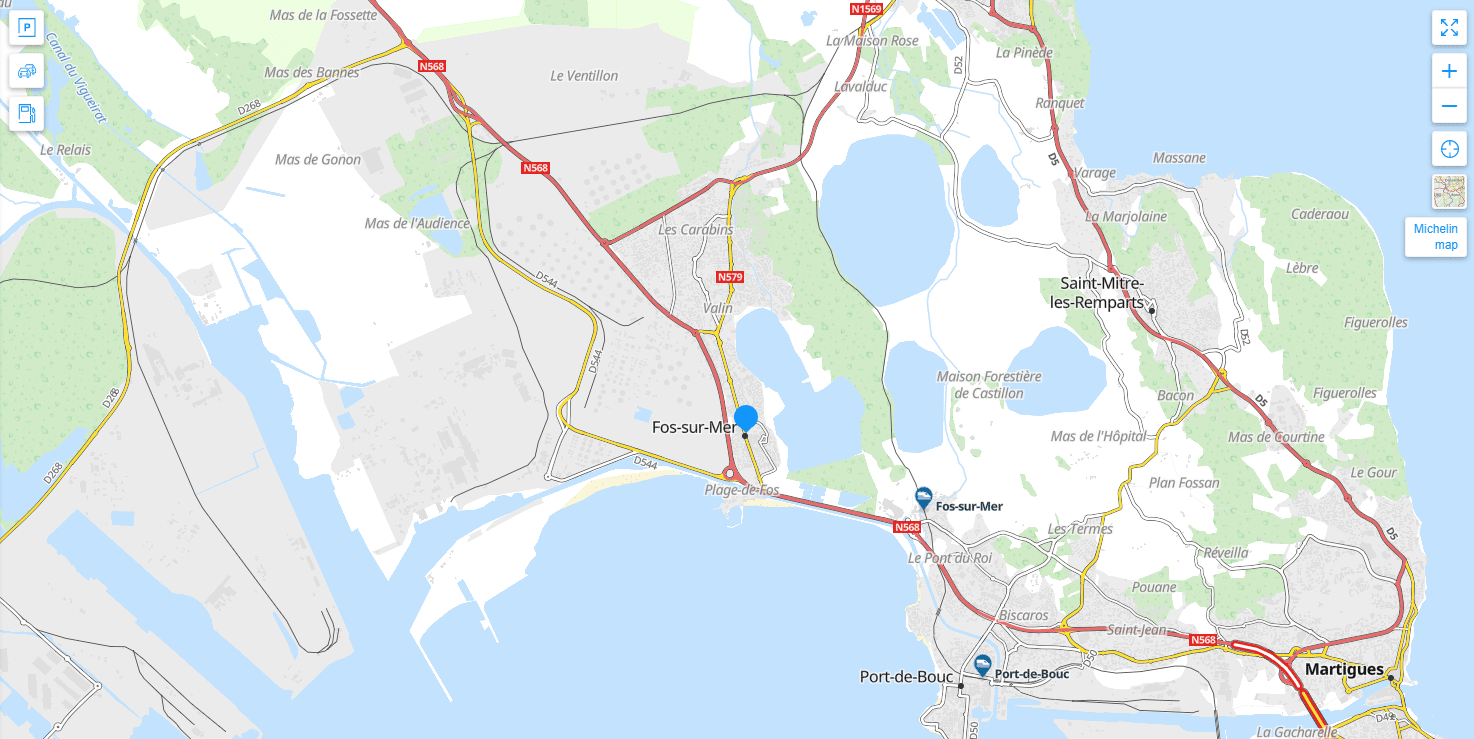
Port of Fos-sur-Mer: A Strategic Deep-Water Port in France
Port Code: FRFOS
Port Size: 9,600 hectares
Port Address: 23 place de la Joliette, BP 81965, Marseille, Cedex 2 13226, France
Main Cargo/Vessel Types: Bulk, containers, tankers, liquefied natural gas, and general cargo
TEUs Handled: Approximately 1,000,000 TEUs
The Port of Fos-sur-Mer, located in the Gulf of Fos near the historic and bustling cities of Marseille and Toulon, boasts a deep-water port that is connected to the Mediterranean Sea and enjoys access to major European trade routes.
It is one of France's key ports for both cargo and passenger vessels. The port features three distinct terminals along with a suite of services, including container handling, warehousing and storage, and transshipment.
Equipped with a range of modern facilities, the port includes cranes and other loading and unloading equipment, state-of-the-art cargo handling systems, and advanced IT infrastructure.
For more information on the Port of Fos-sur-Mer, continue reading below.
Fos-sur-Mer Port: A Pivotal Maritime Gateway
Nestled along the Mediterranean coast, the Port of Fos-sur-Mer is a critical maritime gateway in France, renowned for its expansive 9,600-hectare area and strategic location. This deep-water port serves as a vital link to the Mediterranean and broader European trade networks.
The port's three specialized terminals cater to a variety of maritime activities, from the handling of bulk and containerized cargo to the reception of tankers and liquefied natural gas vessels. The comprehensive range of services offered ensures that the port can accommodate the diverse needs of the shipping industry.
Modern equipment, including sophisticated cranes and cargo handling systems, is complemented by an advanced IT infrastructure that enhances operational efficiency and supports the seamless flow of trade.
As you delve deeper into the Port of Fos-sur-Mer, you will uncover a maritime hub that is not only a testament to France's maritime prowess but also a driving force in the region's economic vitality and global connectivity.
Port Dieppe
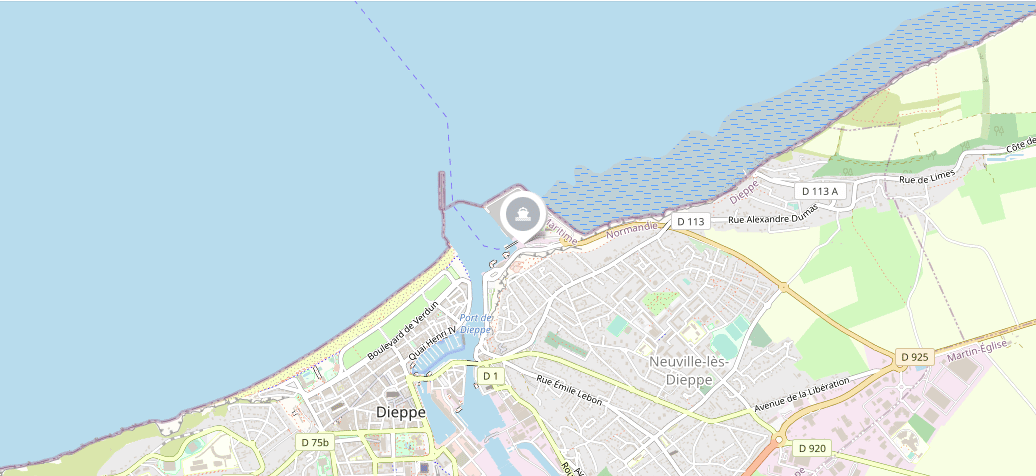
Port of Dieppe: A Vibrant Maritime Gateway on the English Channel
Port Code: FRDPE
Port Size: 9,600 hectares (Note: This size seems unusually large for a port and might be a typo or misinterpretation. The actual size could be 96 hectares or a similar measurement.)
Port Address: Quai Gaston Lalitte, Dieppe, France
Main Vessel Types: Sailing boats, fishing vessels, trawlers, general cargo vessels
TEUs Handled: Approximately 1,000,000 TEUs
The Port of Dieppe, ideally situated on the English Channel, offers convenient access to the United Kingdom, the Netherlands, and Northern Europe. It is a dynamic and modern port equipped with contemporary infrastructure and top-tier facilities. The port is located at a distance of 12,700 nautical miles from China.
It provides a full range of services, including cargo handling, passenger and cruise ship operations, as well as a broad array of support services. The port enjoys excellent connectivity with the French railway network, offering direct access to the region's major ports.
The port caters to a diverse clientele, offering a suite of services and solutions for industries such as oil and gas, fishing, and leisure.
For more insights into the Port of Dieppe, continue reading below.
Dieppe Port: A Thriving Center of Maritime Activity
The Port of Dieppe, with its prime location on the English Channel, stands as a thriving center of maritime activity in France. Its strategic position allows for seamless connectivity with key European markets, making it an attractive hub for international trade.
The port's modern infrastructure supports a variety of maritime activities, from the handling of general cargo to the facilitation of passenger and cruise ship services. Its extensive range of support services ensures that all vessels are well-served upon arrival.
The excellent integration with the French railway network further enhances the port's accessibility, providing efficient land transport options to and from the region's principal ports.
Dieppe Port is committed to serving a wide array of industries, providing tailored services for the oil and gas sector, the fishing community, and the leisure boating enthusiasts.
As you explore the Port of Dieppe further, you will discover a maritime gateway that is not only integral to the region's economic activity but also a testament to France's commitment to maritime excellence.
Port of Roscoff
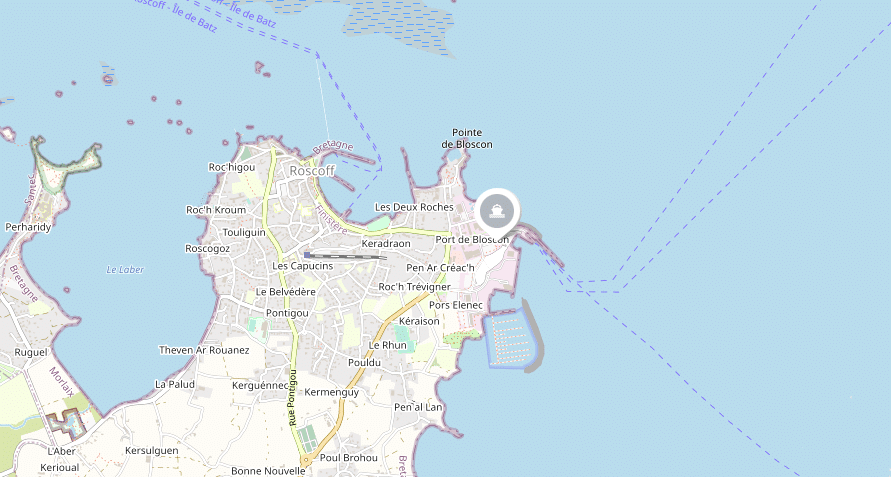
Port of Roscoff: A Notable Maritime Hub in Brittany
Port Code: FRROS
Port Size: Not specified
Port Address: Gare Maritime, Port de Bloscon, Roscoff, France
Main Vessel Types: Ferries and merchant ships
TEUs Handled: Approximately 100,000 to 300,000 TEUs
The Port of Roscoff, a renowned seaport in the Finistère department of Brittany, France, is a bustling center for both commercial and leisure activities. Renowned for its ferry services to the United Kingdom and Ireland, Roscoff is the point of departure for many of Brittany Ferries' routes.
Located approximately 9,000 nautical miles from China, the port is more than just a gateway to international destinations; it is a hub of maritime activity.
Beyond its ferry services, the port offers a wide array of maritime services, including container shipping and fishing facilities. Historically, the port's strategic location has seen it become a site of minor conflicts between France and the United Kingdom. Ultimately, the demand for trade and transportation led to the construction of the port as it stands today.
For more information on the Port of Roscoff, continue reading below.
Roscoff Port: A Gateway to Cultural and Maritime Riches
Nestled along the coast of Brittany, the Port of Roscoff is a testament to the region's vibrant maritime culture and history. As a key maritime hub, it plays a crucial role in connecting France with other parts of Europe, particularly through its robust ferry services.
The port's strategic significance extends beyond its role as a ferry terminal. It is a multifaceted center that supports a variety of maritime activities, including container shipping, which contributes to its status as a dynamic economic asset.
With its rich history, which includes episodes of contention between France and the United Kingdom, the Port of Roscoff stands today as a symbol of cooperation and trade. Its development reflects the evolving needs of commerce and the seafaring communities that call it home.
As you explore the Port of Roscoff further, you will uncover a maritime destination that is deeply intertwined with the cultural and economic life of Brittany, offering a unique blend of tradition and modernity.
Port of Dunkirk
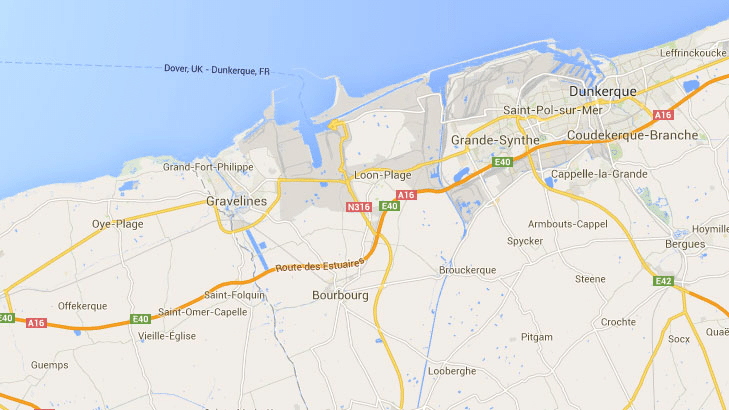
Port of Dunkirk: A Pivotal Port in Northern France
Port Code: FRDKK
Port Size: 7,000 hectares
Port Address: 2505 Rte de l'Écluse Trystram, 59140 Dunkirk, France
Main Vessel Types: Container ships, LNG carriers, general cargo, roll-on/roll-off vessels, passenger ships
TEUs Handled: Approximately 700,000 TEUs
Located in the Nord-Pas-de-Calais region of northern France, the Port of Dunkirk is the third-largest seaport in the country and one of the most significant in Europe. Since its establishment in the mid-1600s, the port has seen a steady rise in activity, evolving into a hub for both freight and passenger vessels. It is situated at a distance of 17,000 nautical miles from China.
Today, the Port of Dunkirk has become a center for trade and industry, with over 2 million tons of goods passing through its gates annually. The port is home to numerous large commercial and industrial enterprises and serves as a venue for a variety of recreational activities for visitors and locals alike.
For more information on the Port of Dunkirk, continue reading below.
Dunkirk Port: A Thriving Industrial and Commercial Nucleus
The Port of Dunkirk, with its expansive 7,000 hectares, stands as a vital economic engine in northern France. As a historic port dating back to the mid-1600s, it has been instrumental in shaping the region's maritime and industrial landscape.
The port's strategic significance is underscored by its diverse range of vessel types, including container ships, LNG carriers, and passenger ships, which contribute to its status as a multifaceted maritime hub.
With an annual throughput of approximately 700,000 TEUs, the Port of Dunkirk is a testament to the region's thriving trade and commerce. It is a bustling center for major commercial and industrial operations, reflecting the port's enduring role in the local and national economy.
Beyond its commercial functions, the port is also a focal point for community engagement, offering recreational opportunities that enrich the lives of both visitors and residents.
As you delve deeper into the Port of Dunkirk, you will discover a dynamic maritime nexus that is central to the region's prosperity and a gateway to global trade.
Port Saint-Malo
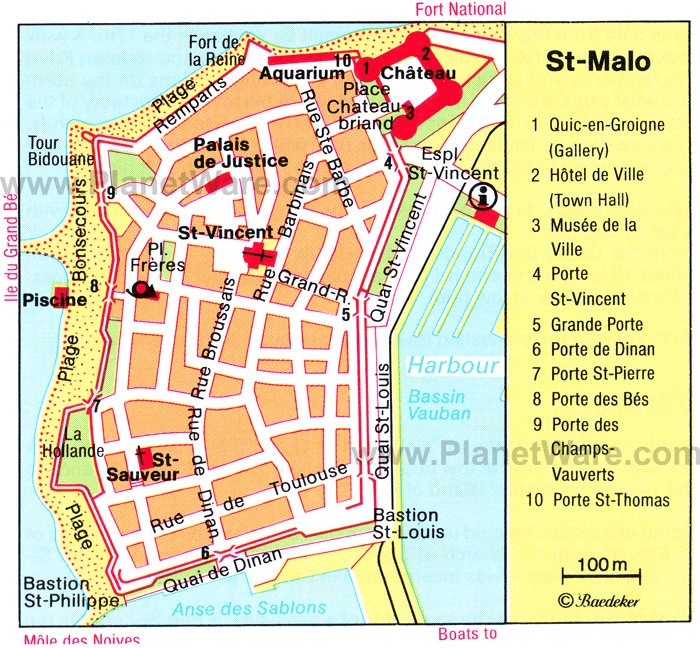
Port of Saint-Malo: A Prominent Port in Brittany
Port Code: FRSML
Port Size: 14.12 square miles
Port Address: Gare Maritime du Naye, Saint-Malo, 35400, France
Main Vessel Types: Sailing boats, yachts, general cargo, fishing vessels, passenger ships
TEUs Handled: Approximately 50,000 TEUs
The Port of Saint-Malo is one of the most significant ports in the region. Located in the English Channel on the northwest coast of France, Saint-Malo is a major maritime hub that handles a variety of goods and services. Shipping from this port to China entails a journey of 9,000 nautical miles.
During World War II, the port was nearly destroyed by the battles between Germany and the United States. It was reconstructed in the 1960s, re-emerging as a thriving port city.
Saint-Malo's port has a long-standing history of operation and is an integral part of the French economy.
For more insights into the Port of Saint-Malo, continue reading below.
Conclusion: The Vital Role of French Ports
France is home to many of the world's major ports, with the Port of Marseille being the largest among them. In addition to the ports discussed here, France boasts significant maritime hubs such as Lyon, Deauville, Brest, La Pallice, and Tréport. These ports play a crucial role in the French economy, facilitating the import and export of goods and services from around the globe.
If you are considering shipping products and items from any of these French ports, understanding their individual characteristics, capacities, and services is essential to ensure seamless logistics and trade operations.Please contact:HQ。
